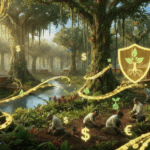SASB, ISO, IIRC, IASB, GRI, CDP, CDSB, TCFD, SDG Compass… companies are asked to report on their sustainability performance in a credible and meaningful way. Otherwise, there is a risk of complaints, for example for “misleading commercial practice”. Above all, there is the risk of not involving their stakeholders in an essential reflection on their ability to adapt and integrate in a world under ever-increasing environmental and social constraints.
Are Sustainability Reports “Just a Marketing Tool”?
I have worked on about a hundred sustainable development reports for the past fifteen years, in Europe, the United States, Brazil and Asia. I have always been positively surprised by the way the exercise has become more professional, and by the ability of many companies to make the effort to provide ever more reliable and transparent information. However, in discussion with many stakeholders, experts and students, I have always had to deal with numerous sceptical comments on the relevance of these reports, full of good will and positive information and too often overshadowing essential subjects.
I came to a simple conclusion: was it better “before”? I remember the citizenship reports of a few companies in the 1990s. The Global Reporting Initiative, the materiality efforts of SASB, the GHG Protocol or laws such as Sarbanes-Oxley or Dodd-Frank in the United States have considerably standardized and normalized the quality of the information provided in these reports. The tremendous development of social media also makes it easier today to cross-reference information provided by a company with the point of view of relevant expert communities or stakeholders: it becomes difficult to disseminate allegations that can be easily contradicted in two clicks on the web…
The quality of sustainability reports today is, in the end, the story of the half-empty or half-full glass:
- Half-full glass: regulatory pressure, the emulation created by the dynamics of stakeholders questioning reports and the tremendous development of social media make it possible to access much better quality extra-financial information today than it was 10 or 15 years ago.
- Half-empty glass: vigilance must be maintained. Sustainability remains a young discipline: non-financial information made public can be improved to continue to gain relevance and credibility
10 questions to Nurture a Credible and Meaningful Sustainability Reporting Approach
Thus, to write a sustainability report that creates trust and serves as a vehicle for dialogue, here are some questions to ask
1) A Sustainability report is a tool for dialogue
In short, what makes it fundamentally different from an advertising spot is that a good sustainability report must present an approach in a humble way, revealing that the company has sufficient maturity to understand the main social, societal and environmental challenges it faces, without trying to make people believe that it has full control over the solutions. The sustainability report is a tool to share an approach and offer it to constructive criticism from expert communities.
2) Identification of priority topics
In addition to a long collection of initiatives in all directions, the sustainability report must present the topics that the company intends to address as a priority because of its ability to influence these major risks and opportunities. This approach is often referred to as “materiality”, and is becoming extremely widespread. The report should provide information to understand the multi-stakeholder consultative process that identified priority issues, in particular to avoid any process that is too consanguineous and does not use the collective intelligence lever provided by a multi-stakeholder consultation.
3) A forward-looking vision crossed with past information
A good sustainability report should make it possible to understand a proactive and ambitious vision, resolutely oriented towards the future, supported by sustainability objectives that project the company towards 2025 or even 2030. The provision of reporting to analyse performance over the past year (and earlier) should make it possible to give credibility to the achievement of the future vision: is the company on a good improvement trajectory? What has it been able to learn from past initiatives, allowing it to refine its achievement of future objectives?
4) Combination of overview of policies as well as how they are implemented
Does reporting provide information on both policies and their implementation, feedback and corrective actions? It is useful to know, for example, that there is a code of conduct or an anti-corruption policy. It is also essential to understand how these processes are implemented, the operational difficulties encountered, incidents and patches put in place to reduce risks or improve the dissemination and adoption of practices across the organization.
5) Combination of company wide data as well as illustrative case studies
Does reporting provide data covering an overall scope, or does it focus on anecdotal information? It is always interesting to discover a case study or a pilot project. It is therefore essential to understand how a case study is illustrative of an overall approach, or simply corresponds to a local and pilot initiative. If so, it is essential to understand the approaches envisaged to generalize a pilot project in an organization.
6) Comparable information
Is the information provided by the company presented in a way that facilitates comparison with other companies? Different standards are useful for providing comparable information.
7) Good News. Bad News
Does the reporting include good news as well as bad news? This is always a difficult point, but essential to give credibility to a reporting approach. No one in the sustainability community frankly expects to find companies with a perfect command of complex subjects. On the contrary, if the sustainability report is to play its role as a tool for dialogue, it is the company’s responsibility to share difficulties and encourage expert readers to contribute ideas and constructive criticism to help the company make progress on often really difficult subjects.
8) Consistency of sustainability and non sustainability information
Does the proposed sustainability reporting communicate with the company’s publicly available elements dealing with overall strategy and financial reporting? It is always surprising to have a sustainability report that shows, for example, how essential the R&D effort for clean technologies is; and when you look at the information provided by the same company on R&D, you don’t find a line on renewable energy…. If sustainability is indeed a strategic theme for the company, then the dedicated report must present information that is consistent with what other functional units (human resources, finance, R&D…) have to share. Otherwise, there is a dissonance that raises suspicions….
9) Granular access to information
Does the CSR report use the functionalities offered by the Internet (granular access to information, social media, etc.)? The concept of the PDF report, which is a copy/pasted copy of the web content of the sustainability report, is completely outdated and still remains very strong in 2018…. A good sustainability reporting approach must use the functionalities of the web to focus on a PDF of essential, relatively permanent and strategic information (business profile, priority issues, vision and objectives, key performance indicators, etc.), while the web interface must provide access to additional information for those wishing to explore a subject in greater depth (downloading additional information, thematic websites, etc.), engage in dialogue via a blog, cross-reference the views (uncensored, but possibly moderate) of stakeholders, integrate and live together with social media such as Twitter, Facebook or Linkedin
10) Uncensored cross-referenced view of stakeholders
Giving the floor, even if it is very critical, to stakeholders who have their own vision on the subjects addressed by the sustainability report, is approaching the truth and its multifaceted complexity. This is opening up dialogue, as well as stimulating the type of collective dynamics needed to find the relevant solutions. For example, I am still too often surprised by the lack of a trade union voice on social issues.
It is by actively working on these principles that companies can avoid any risk of accusations of misleading practices. As a tool for dialogue, the sustainability report is credible because of its ability to demonstrate a need for collective intelligence, making it possible to deal with complex issues, driven by a humble and constructive approach driven by the company with the networks of experts and stakeholders (or their representatives).
Author of several books and resources on business, sustainability and responsibility. Working with top decision makers pursuing transformational changes for their organizations, leaders and industries. Working with executives improving resilience and competitiveness of their company and products given their climate and human right business agendas. Connect with Farid Baddache on Twitter at @Fbaddache.






